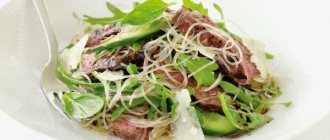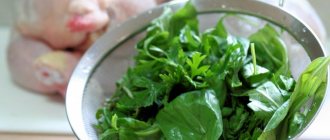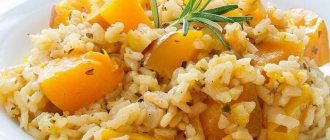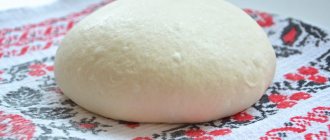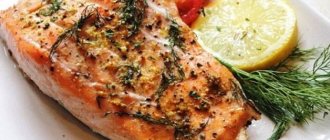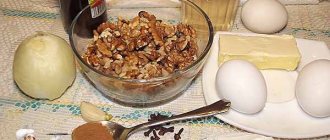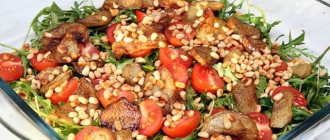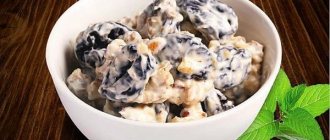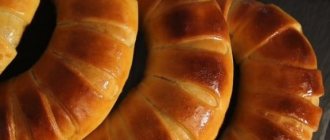Today on our menu is funchoza with vegetables - a very healthy and tasty dish. Exotic food refers to representatives of Chinese cuisine, usually spicy with a large number of spicy additives that are loved in Asian cooking. In addition to vegetables, recipes are supplemented with chicken and other types of meat, seafood, mushrooms, and fish. They cook rice noodles hot or make amazingly delicious salads. Put in soups, appetizers, main courses.
Interestingly, the noodles do not have their own taste. Therefore, all dishes must be prepared with additional ingredients and a variety of spices. Funchoza quickly and easily absorbs their taste, like a fur coat, taking on color and aroma.
What is funchose
In our country, it is better known as rice, Chinese or glass noodles. The product received the latter name due to its transparency, which makes the noodles look incredibly fragile. The noodles resemble spaghetti because some types turn white when cooked. Real funchose is made from mung beans, and it is considered the most healthy. There are several other types of rice noodles made from rice, potato, corn flour, cassava, and yams.
In addition to a lot of useful vitamins and microelements, the product has one significant advantage: the complete absence of gluten. And one serious drawback is that the calorie content of the product is not encouraging. For 100 gr. noodles contain 320 kcal, so it should be treated like all products containing a large amount of carbohydrates.
You should not overuse dishes with funchose. Although nutritionists allow them to be included in the menu, but in moderation. When choosing a product, be sure to look at the country of origin. Give preference to products from Thailand.
Recipe for Funchoz with vegetables (stewed). Calorie, chemical composition and nutritional value.
Nutritional value and chemical composition of “Funchoza with vegetables (stewed).”
The table shows the nutritional content (calories, proteins, fats, carbohydrates, vitamins and minerals) per 100 grams of edible portion.
| Nutrient | Quantity | Norm** | % of the norm in 100 g | % of the norm in 100 kcal | 100% normal |
| Calorie content | 69.1 kcal | 1684 kcal | 4.1% | 5.9% | 2437 g |
| Squirrels | 1.7 g | 76 g | 2.2% | 3.2% | 4471 g |
| Fats | 2.9 g | 56 g | 5.2% | 7.5% | 1931 |
| Carbohydrates | 9.3 g | 219 g | 4.2% | 6.1% | 2355 g |
| Organic acids | 0.2 g | ~ | |||
| Alimentary fiber | 0.6 g | 20 g | 3% | 4.3% | 3333 g |
| Water | 73 g | 2273 g | 3.2% | 4.6% | 3114 g |
| Ash | 0.575 g | ~ | |||
| Vitamins | |||||
| Vitamin A, RE | 76.4 mcg | 900 mcg | 8.5% | 12.3% | 1178 g |
| beta carotene | 0.458 mg | 5 mg | 9.2% | 13.3% | 1092 g |
| Vitamin B1, thiamine | 0.03 mg | 1.5 mg | 2% | 2.9% | 5000 g |
| Vitamin B2, riboflavin | 0.022 mg | 1.8 mg | 1.2% | 1.7% | 8182 g |
| Vitamin B4, choline | 2.77 mg | 500 mg | 0.6% | 0.9% | 18051 g |
| Vitamin B5, pantothenic | 0.112 mg | 5 mg | 2.2% | 3.2% | 4464 g |
| Vitamin B6, pyridoxine | 0.127 mg | 2 mg | 6.4% | 9.3% | 1575 g |
| Vitamin B9, folates | 7.894 mcg | 400 mcg | 2% | 2.9% | 5067 g |
| Vitamin C, ascorbic acid | 37.3 mg | 90 mg | 41.4% | 59.9% | 241 g |
| Vitamin E, alpha tocopherol, TE | 1.492 mg | 15 mg | 9.9% | 14.3% | 1005 g |
| Vitamin H, biotin | 0.578 mcg | 50 mcg | 1.2% | 1.7% | 8651 g |
| Vitamin K, phylloquinone | 3.3 mcg | 120 mcg | 2.8% | 4.1% | 3636 g |
| Vitamin RR, NE | 0.4759 mg | 20 mg | 2.4% | 3.5% | 4203 g |
| Niacin | 0.316 mg | ~ | |||
| Macronutrients | |||||
| Potassium, K | 152.64 mg | 2500 mg | 6.1% | 8.8% | 1638 g |
| Calcium, Ca | 9.17 mg | 1000 mg | 0.9% | 1.3% | 10905 g |
| Magnesium, Mg | 10.7 mg | 400 mg | 2.7% | 3.9% | 3738 g |
| Sodium, Na | 162.87 mg | 1300 mg | 12.5% | 18.1% | 798 g |
| Sera, S | 11.28 mg | 1000 mg | 1.1% | 1.6% | 8865 g |
| Phosphorus, P | 23.2 mg | 800 mg | 2.9% | 4.2% | 3448 g |
| Chlorine, Cl | 29.16 mg | 2300 mg | 1.3% | 1.9% | 7888 g |
| Microelements | |||||
| Aluminium, Al | 36.7 mcg | ~ | |||
| Bor, B | 65.8 mcg | ~ | |||
| Iron, Fe | 0.348 mg | 18 mg | 1.9% | 2.7% | 5172 g |
| Yod, I | 1.55 mcg | 150 mcg | 1% | 1.4% | 9677 g |
| Cobalt, Co | 3.382 mcg | 10 mcg | 33.8% | 48.9% | 296 g |
| Manganese, Mn | 0.1033 mg | 2 mg | 5.2% | 7.5% | 1936 |
| Copper, Cu | 68.75 mcg | 1000 mcg | 6.9% | 10% | 1455 g |
| Molybdenum, Mo | 2.89 mcg | 70 mcg | 4.1% | 5.9% | 2422 g |
| Nickel, Ni | 5.642 mcg | ~ | |||
| Rubidium, Rb | 106.8 mcg | ~ | |||
| Selenium, Se | 0.165 mcg | 55 mcg | 0.3% | 0.4% | 33333 g |
| Fluorine, F | 48.38 mcg | 4000 mcg | 1.2% | 1.7% | 8268 g |
| Chromium, Cr | 3.14 mcg | 50 mcg | 6.3% | 9.1% | 1592 g |
| Zinc, Zn | 0.2259 mg | 12 mg | 1.9% | 2.7% | 5312 g |
| Digestible carbohydrates | |||||
| Starch and dextrins | 0.145 g | ~ | |||
| Mono- and disaccharides (sugars) | 2.8 g | max 100 g | |||
| Glucose (dextrose) | 0.431 g | ~ | |||
| Sucrose | 0.7 g | ~ | |||
| Fructose | 0.467 g | ~ | |||
| Essential amino acids | 0.075 g | ~ | |||
| Arginine* | 0.018 g | ~ | |||
| Valin | 0.009 g | ~ | |||
| Histidine* | 0.003 g | ~ | |||
| Isoleucine | 0.011 g | ~ | |||
| Leucine | 0.012 g | ~ | |||
| Lysine | 0.016 g | ~ | |||
| Methionine | 0.002 g | ~ | |||
| Methionine + Cysteine | 0.005 g | ~ | |||
| Threonine | 0.01 g | ~ | |||
| Tryptophan | 0.003 g | ~ | |||
| Phenylalanine | 0.011 g | ~ | |||
| Phenylalanine+Tyrosine | 0.018 g | ~ | |||
| Nonessential amino acids | 0.061 g | ~ | |||
| Alanin | 0.005 g | ~ | |||
| Aspartic acid | 0.006 g | ~ | |||
| Glycine | 0.004 g | ~ | |||
| Glutamic acid | 0.02 g | ~ | |||
| Proline | 0.003 g | ~ | |||
| Serin | 0.002 g | ~ | |||
| Tyrosine | 0.007 g | ~ | |||
| Cysteine | 0.003 g | ~ | |||
| Sterols (sterols) | |||||
| beta sitosterol | 5.505 mg | ~ | |||
| Saturated fatty acids | |||||
| Saturated fatty acids | 0.3 g | max 18.7 g | |||
| 16:0 Palmitinaya | 0.171 g | ~ | |||
| 18:0 Stearic | 0.113 g | ~ | |||
| 20:0 Arakhinovaya | 0.008 g | ~ | |||
| 22:0 Begenovaya | 0.019 g | ~ | |||
| Monounsaturated fatty acids | 0.655 g | min 16.8 g | 3.9% | 5.6% | |
| 18:1 Oleic (omega-9) | 0.652 g | ~ | |||
| Polyunsaturated fatty acids | 1.646 g | from 11.2 to 20.6 g | 14.7% | 21.3% | |
| 18:2 Linolevaya | 1.646 g | ~ |
The energy value of Funchoz with vegetables (stewed) is 69.1 kcal.
Primary Source: Created in the application by the user. Read more.
** This table shows the average levels of vitamins and minerals for an adult. If you want to know the norms taking into account your gender, age and other factors, then use the “My Healthy Diet” application.
How to cook funchose
The process of making Chinese noodles is quite simple. You will have to maintain the proportion of water and funchose, and add salt in moderation. Housewives know two ways to prepare the product for subsequent cooking - boil or steam.
How to cook (more suitable for salads):
- For every 100 gr. noodles take 1 liter of water. Add a small spoonful of salt. Pour a large spoon of any oil: vegetable, sesame, olive.
- Bring the water to a boil and place the pasta in the water. To prevent them from spreading, you need to stretch a thick thread through the noodle ring and tie the ends with a strong knot. Leave the ends of the threads outside the pan, then it will come out easily.
- Cover the pan with a lid and cook for 5 minutes. Remove and cool.
- Once the noodles have cooled, remove the string, then cut them into pieces of the desired length.
How to steam (if you are preparing a hot dish and the product will undergo further heat treatment):
- Boil water, salting it a little. Pour over the noodles. After 3-4 minutes, drain the liquid.
Funchoza with vegetables - a simple recipe
A simple option for preparing glass noodles with vegetables. I consider it classic, quick and easy to make, and very successful, meeting all the canons of oriental cuisine.
Necessary:
- Chinese noodles – ½ pack.
- Green beans - a large handful.
- Sweet red pepper.
- Carrot.
- Bulb.
- Salt.
How to cook:
- Steam the noodles by pouring salted boiling water over them. After 3 minutes, drain and place in a colander.
- Boil the beans in slightly salted water (after boiling, cook for 5 minutes, this is enough). Then take it out and cut the pods.
- Cut the vegetables: peppers and carrots into strips, divide the onion into half rings. Sauté the onion slices first. Then, when the onion becomes transparent, add carrot straws to it. After 5 minutes, when the vegetables are browned, add pepper strips. Fry over high heat for a few more minutes, add salt.
- Place the beans in the pan. Without reducing the heat, fry for another 5 minutes. Do not leave the stove, be sure to stir the contents.
- Add steamed noodles, stir, reduce heat. Cook for approximately 5-7 minutes.
↑ Hot funchoza with beef and vegetables
Preparing hot funchose with beef and vegetables at home is not difficult even for an inexperienced housewife. All the actions that will be needed from you are very simple and do not require special skills. Glass noodles are very appetizing, have a spicy taste, and thanks to the meat, they have good nutritional value.
Cooking time: 20-30 minutes.
Ingredients:
- Beef tenderloin - 250 g;
- Funchoza - 300 g;
- Medium carrots – 1 pc.;
- Onions – 1 pc.;
- Garlic - 2 cloves;
- Soy sauce – 3 tbsp;
- Olive oil - for frying;
- Salt - as needed;
- Chili pepper – 0.5 pods.
Preparation:
We remove sweet peppers and chili from seeds and stalks, wash them, and cut them into thin long strips. We peel the carrots, rinse them, and grate them on a Korean shredder.
Remove the skin from the onion and cut it into thin half rings. Chop the peeled garlic into small pieces.
We thoroughly rinse the beef pulp under running water and then dry it with a paper towel. Cut the meat into thin slices.
Pour olive oil into the wok (can be replaced with vegetable oil), put the meat there. Fry it over high heat until golden brown. As soon as the product turns golden brown, add carrots, sweet and chili peppers, onions, reduce heat to medium, stir and continue cooking together for another 10 minutes. If you don't like the spicy taste of your food, then simply don't use hot peppers.
Place the funchose in a container with boiling water and leave for 7-10 minutes.
After the specified time, place the glass noodles in a colander and rinse under running cold water.
Now add chopped garlic, pepper to the meat and vegetables, pour soy sauce over it all. Mix all ingredients again with a spatula and fry for another 5 minutes.
Now we move the vegetables and beef tenderloin in the frying pan to the edge, and add the prepared Chinese paste to the center. Reduce the heat to minimum.
Gently mix the contents of the pan, leave it to simmer for 2-3 minutes so that the glass noodles warm up well.
Lunch is ready. Before serving, vermicelli can be decorated with fresh herbs.
How to cook funchose with vegetables and chicken
Traditional hot cooking option. A light, yet satisfying dish that is perfect for dinner and lunch.
We take:
- Chicken breast (or any fillet) – 1 pc.
- Chinese noodles – half a pack.
- Green beans - a large handful.
- Carrot.
- Sweet pepper – ½ part.
- Garlic cloves – 4 pcs.
- Soy sauce - spoon (optional).
- Salt, hot chili pepper, regular pepper, sunflower oil.
Preparation:
- Pour salted boiling water over funchose and hold for about 3 minutes. Drain the liquid in a colander. If you want, cut the noodles with scissors, then it will be more convenient to eat.
- Divide the garlic into slices and fry in oil in a frying pan. Add the carrots cut into strips.
- When the vegetables are browned, cut the chicken into strips and add to the frying pan.
- Fry over high heat for a couple of minutes. Then add the bell peppers cut into strips and thawed beans.
- Stir without reducing power, fry for about 8 minutes, stirring continuously.
- Lay out the noodles, which by this time are already soggy. If you want to make the dish spicier, add soy sauce. Taste for salt and adjust taste.
- Fry the ingredients together for about 2-3 minutes and start tasting.
Recipe 6: Funchoza salad with mushrooms and vegetables (step by step)
It’s quite easy to prepare funchose at home, it doesn’t take much time, and it always turns out very tasty and aromatic.
- funchose - 300 grams;
- champignons - 400 grams;
- bell pepper - 1 piece;
- carrots - 1 piece;
- onion - 1 piece;
- sesame - 1 pack;
- soy sauce - 4 tbsp. spoons;
- ginger - 1 piece;
- garlic - 3 cloves;
- sunflower oil - 2 tbsp. spoons
Cut the bell pepper into thin strips.
I grated the carrots using a Korean carrot grater. You can also simply cut it into long strips.
Cut the onion thinly into half rings.
Wash the champignons and cut into thin slices.
Now place the peppers, carrots and onions in a hot frying pan and lightly fry for 5-10 minutes. While the vegetables are fried, put the noodles in boiling water and cook for 1 minute, then drain the water. You can also simply put the noodles in hot water for 6-7 minutes.
When the vegetables are slightly fried, add the champignons and continue to fry for another 10-15 minutes.
Grate the ginger and pass the garlic through a garlic press. And add them to the vegetables and fry for another 5 minutes.
Now put the noodles in the pan and stir
and add soy sauce. Continue stirring for 3 minutes and turn off. The noodles should be served immediately.
Sprinkle sesame seeds on top.
Hot Chinese vermicelli with shrimp and sauce
Noodles go well with all seafood. The dishes turn out to be very filling and tasty. I warn you: the sauce is made spicy, but this point can be adjusted by adding or vice versa, reducing the amount of chili pepper.
Take:
- Funchoza – 100 gr.
- Peeled shrimp – 200 gr.
- Chili pepper - a pinch.
- Garlic cloves – 8-10 pcs.
- Pepper, olive oil, salt.
For the sauce:
- Cherry tomatoes – 6 pcs.
- Bell pepper – ½ part.
- Garlic – 4-5 cloves.
- Chili - to taste.
How to cook:
- Boil water, add a couple of cloves of garlic, a spoonful of olive oil, and add some salt. Send the shrimp to boil (meat only). After a couple of minutes, drain in a colander.
- Heat a couple of tablespoons of oil in a frying pan and add 3 garlic cloves, cut into slices. Stirring, fry for 2-3 minutes. Soon the oil will take on a delicious garlicky aroma. Take out the cuttings, throw them away, they will no longer be useful.
- Fry the shrimp in oil for a couple of minutes on each side.
- Boil water in another saucepan, pour it over the noodles, add a spoonful of oil and salt. Cover the bowl and leave for 5-7 minutes. Drain the liquid.
- At the same time, prepare the sauce. Finely chop the garlic and fry over high heat. Don't forget to stir the contents.
- Then divide the tomatoes into 4 parts and add them to the frying pan. When the juice appears, add the chili. Reduce heat and simmer the sauce over low heat for 5-7 minutes.
- Form a dish by placing noodles on a plate and pouring sauce over them. Place a pile of shrimp nearby and serve until the dish has cooled.
Funchoza with vegetables and seafood
Another hot rice noodle dish, but with a different set of vegetable components. Take any seafood, but it’s better to find an assortment, it will be much tastier.
Take:
- Funchoza – ½ pack.
- Seafood – 250-300 gr. (total amount).
- Bell pepper.
- Carrot.
- Cauliflower - optional.
- Green beans – 2 handfuls.
- Garlic cloves – 3 pcs.
- Onion – ½ small head.
- Vegetable oil, mixture of peppers, salt.
How to cook:
- Heat the oil, alternately fry onion half rings, carrot shavings, sweet pepper cut into strips and garlic slices.
- Add green beans (you don’t need to defrost them), throw in the seafood, pepper and salt.
- When the contents boil, reduce the heat to moderate. Simmer until the liquid boils away. Don't forget to stir the dish.
- At the same time, steam the funchose in salted water. Hold for three minutes, drain off excess. For ease of eating, cut with scissors.
- Add noodles to vegetables. Splash some oil and turn the heat up to full power.
- Fry with continuous stirring for 5-7 minutes.
Recipe 3, step by step: funchose cooked with vegetables
Over the past few years, this transparent vermicelli has created a real sensation among Russian gourmets. The main advantage of funchose is its low calorie content and the absence of any additives in its composition, which makes it completely natural and accessible to those who prefer a vegetarian lifestyle. Funchoza consists of rice flour or rice starch and looks like thin transparent threads, for which it received another name - glass vermicelli. It has no taste or smell and goes perfectly with any vegetables and sauces, meat and fish. If you don’t know what funchose dish to prepare, we recommend starting with a light salad. We prepare a salad with funchose and vegetables, simple and tasty.
- 300 gr. vermicelli funchose,
- 1 carrot,
- 1 yellow and 1 red bell pepper,
- 1-2 fresh medium fresh cucumbers,
- 1 tsp rice or table vinegar,
- 2 tbsp. soy sauce,
- 1 tbsp. vegetable oil.
The first step is to soak the vermicelli for 20 minutes. In the meantime, she’s soaking, let’s start cooking vegetables.
Wash and finely chop the carrots. You can grate it on a Korean carrot grater.
Cut the pre-washed and peeled pepper into thin strips.
Wash the cucumbers, peel them and cut into strips.
Heat a frying pan, pour a little vegetable oil into it and add pepper. It must be fried for about 4 minutes, stirring constantly.
Place the carrots next. Fry for another 3 minutes. Don't forget to stir.
Place the cucumbers into the pan next. Mix everything again. Keep on fire for another 2 minutes.
All that remains is to lightly fry the garlic; you should not fry it for a long time; as soon as the aroma comes from the fried garlic, remove from the heat.
While the vegetables are roasting, you can start preparing the funchose. Thread the threads into the vermicelli ring and place the funchose together with them in boiling water. Cook for no more than 5 minutes. Particularly thin versions of funchose can simply be poured with boiling water and left for 7-10 minutes.
Then you need to drain the funchose in a colander and rinse with cold water.
Place the funchose on a dish and remove the threads. Cut the cooled vermicelli into several pieces.
Mix the prepared vegetables together with funchose.
Add soy sauce to taste, 1 teaspoon of rice or table vinegar.
Mix everything thoroughly and place the vegetables in a salad bowl. Salad ready.
Funchoza in Korean - salad recipe at home (step by step)
A popular dish that comes from Korean cuisine.
You will need:
- Funchoza – 150 gr.
- Bell pepper.
- Carrot.
- Cucumber – 150 gr.
- Parsley, chopped - 3 tablespoons.
- Leek – 70 gr.
- Sunflower oil – 3 tablespoons.
- Garlic – 2-3 cloves.
- Soy sauce - large spoon.
- Rice vinegar - the same amount (in case of lack of availability, replacement with any other is allowed).
- Hot red pepper – ¼ spoon.
- Coriander beans – ½ teaspoon.
- Salt.
Step-by-step recipe with photos:
Using a Korean grater, grate the carrots, add salt, and squeeze a little with your palms so that the root vegetable releases the juice faster.
Grate the cucumbers in the same way and place in a salad bowl.
Cut the white part of the leek into strips.
For sweet peppers of any color, remove the seed box, take half the pulp, cut into thin strips. Take the second half of the pepper of a different color, then the salad will become much more beautiful.
Finely chop the parsley.
Chop the garlic cloves and place them in the center of the salad bowl. You can put more of it than indicated in the recipe.
Sprinkle all the spices and seasonings indicated in the recipe list in the center, on the garlic. At the same time, pour oil into a saucepan and place on the stove. Heat it until it smokes lightly. The recipe calls for vinegar, but you don’t have to add it at all; the decision is yours.
Pour hot oil into the center of the salad bowl, over the garlic seasonings. Mix thoroughly, distributing the oil and spices over the vegetables.
Pour lightly salted boiling water over the rice noodles. Cover with a lid and leave for 3 minutes. Then drain the water through a colander. Cut long noodles with scissors to make the dish easier to eat (you can break them before soaking).
Combine vegetables with funchose and mix well. Be sure to taste for salt, spiciness, and seasonings. Adjust the taste of the dish. Cover the salad bowl with a lid and place it on the refrigerator shelf. I don’t recommend rushing, be patient for 3-4 hours, no less, then the components will have time to soak properly.
Recipe 1: salad with funchose and vegetables (step-by-step photos)
Our most popular Chinese noodle dish is Korean salad with vegetables. We will need funchose, vegetables (cucumber, carrots, bell pepper) and ready-made commercial dressing. In principle, you could make the dressing yourself; there is nothing complicated or hard to find: soy sauce, vegetable oil, peppers, vinegar, garlic, ginger, sugar, and some other seasonings and spices to taste. But we’ll do that another time, and today we’ll make do with a pretty decent store-bought one.
- bell pepper,
- Korean gas station,
- Carrot,
- Fresh cucumber,
- Funchoza
We start cooking with the main ingredient. Chinese glass noodles don’t even need to be boiled, they are simply poured with boiling water and given a few minutes to soak – that’s all!
Therefore, put a couple of balls of funchose in a deep bowl and bring the kettle to a boil.
Pour boiling water over the noodles and leave to soak for 3-5 minutes.
Each piece of dry funchose is a multi-meter thread wound into a ball. For ease of eating, it is advisable to shorten it: cut each ball directly in the water with kitchen scissors in 3-4 places.
Place the soaked noodles in a sieve, draining the water. You can wash it, you can not wash it - it makes no difference. If we want to have a hot side dish, then it is better not to rinse, but to serve immediately, but if we are going to make a salad, then for speed we can rinse with cold water. Set the sieve aside to allow the remaining water to drain smoothly.
Now let's take on the vegetables and make the salad. There is a rule: in salads, all products should be as close in shape as possible. That is, long thin glass noodles dictate the shape of slicing - with long noodles with a knife or using a “Korean shredder”.
After cutting, we got a very beautiful and bright set: green cucumber, orange carrot, red and yellow bell pepper.
The Chim-Chim salad dressing is completely ready for use; you just need to knead the packet thoroughly in your hands so that the contents come out completely.
Add the prepared funchose and dressing to the vegetables, mix everything thoroughly.
This is how we got a bright, cheerful, appetizing and very aromatic salad!
It’s just too early to eat a salad with funchose: you need to give the dish time to absorb and combine all the tastes and aromas into a single bouquet.
To do this, we must transfer the prepared salad with rice noodles into a container and refrigerate for at least an hour, or better yet, overnight.
Glass noodles with meat and vegetables
A hearty second course, the preparation technology is reminiscent of a salad, since it is served cold.
Compound:
- Minced meat – 500 gr.
- Chinese noodles – 250 gr.
- Cucumber.
- Tomatoes – 3 pcs.
- Bulb.
- A clove of garlic.
- Chili pepper pod.
- Lemon juice, oil, soy sauce, salt, pepper, dill, green onions, parsley.
How to do:
- Brew the noodles. When it swells, drain the water and cut it for ease of use.
- Finely chop the onion and garlic. Divide the chili pod into rings.
- Heat sunflower oil in a frying pan and fry the minced meat. Stir until broken down into smaller fractions.
- Add chopped onion and garlic, chili, add salt. Fry until the liquid has evaporated.
- Cut the cucumbers into half rings, divide the tomatoes into 4 slices, remove the inner, liquid part. Cut the pulp into strips.
- Chop all the greens.
- Mix cooled minced meat, vegetables, noodles, and herbs.
- Season with soy sauce, lemon juice from half the fruit, pepper, and salt the salad.
- Stir the appetizer, if you find a handful of sesame seeds, sprinkle on top.
Salad of funchose and vegetables with soy sauce
Knowing a simple but original recipe will help you out if you need to quickly set the table and at the same time show off your culinary skills.
Necessary:
- Funchoza – 200 gr.
- Bell pepper.
- Cucumber.
- Carrots – 2-3 pcs.
- To refuel:
- Soy sauce - a tablespoon.
- Rice vinegar (apple vinegar, wine vinegar) – large spoon.
- Garlic – clove.
- Cilantro - a small bunch.
- Sesame oil - a small spoon.
How to cook:
- Boil the noodles (see above for how to do this), cool, and cut.
- Finely chop the cilantro, pass the garlic through a press, and add sesame oil. Add vinegar, soy additive, mix well.
- Cut the vegetables into strips as thin as possible.
- Combine the ingredients in a salad bowl and season. The salad should sit in the refrigerator for at least a couple of hours so that the funchose is saturated.
Noodles with meat, vegetables, Teriyaki sauce
We take:
- Pork ham – 250-300 gr.
- Funchoza – 250 gr.
- Teriyaki sauce – 100-150 ml.
- Sweet pepper.
- Bulb.
- Carrot.
- Garlic cloves – 4-5 pcs.
- Ginger root – 30 gr.
- Parsley - a few sprigs.
- Oregano – a pinch.
- Sesame seed - a pinch.
- Sunflower oil, pepper, salt.
Preparation:
- Boil the noodles using the technology described at the beginning of the article.
- Rinse the piece of meat, be sure to dry it with towels, and cut into pieces of any size.
- Divide the vegetables into strips.
- Add oil to the pan and heat until almost smoking. Lay out the sliced meat.
- Soon the meat will begin to brown, be sure to stir it. Add grated ginger and minced garlic.
- After a couple of minutes, throw in the onion cubes and carrot strips. Continue to fry the vegetables, stirring constantly, until nicely browned. Add the pulp of the bell pepper, cut into strips.
- Then add chopped parsley. Slowly pour in half of the Teriyaki sauce. Pepper the dish.
- Place the finished noodles into the frying pan, stir, turn off the burner. Decide on taste. If the salt and spiciness are not enough, add more teriyaki.
- Toast the sesame seeds in a completely dry frying pan. When they change color, pour into a dish. Stir the contents thoroughly again and begin the treat.
